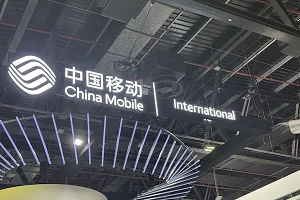As the AI-powered ultra-broadband era rapidly approaches, carriers are undergoing a strategic shift from selling connectivity to selling services. Meanwhile, enterprise demand for secure campus networks is surging.
To address these evolving needs, Huawei unveiled its Xinghe AI Campus Full-Scope Security Solution at the 11th Ultra-Broadband Forum (UBBF 2025) themed "Thrive with UBB Advanced for All Intelligence." With three core capabilities—spatial security, transmission security, and privacy security—the solution precisely responds to the security demands of key industries such as hospitality, retail, finance, and education, accelerating carriers' expansion into the ToB market.
Technological Differentiation as an Anchor: Wi-Fi Sensing and Communication Integration Reshapes Spatial Value
"Wi-Fi sensing and communication integration moves beyond connectivity toward sensing and transforms Wi-Fi from a wireless office tool to a spatial sensing anchor," said James Chen, President of Huawei Carrier Business, during his keynote speech. "This transformation enables precise sensing and always-on, multidimensional protection, empowering carriers to go beyond basic connectivity and deliver higher-value services." This perspective underscores the evolutionary direction of campus networks.
In the AI era, campus networks have evolved far beyond basic Internet access and bandwidth. Carriers are now expected to create added value for ToB customers through technology innovation. Wi-Fi sensing and communication integration lies at the heart of this transformation—enabling each wireless access point (AP) to serve dual roles in both connectivity and sensing.
This enables stable connections for services like HD video conferencing and retail IoT, while also delivering value-added capabilities such as spatial status monitoring and privacy protection. Ultimately, it helps carriers evolve from bandwidth providers to trusted digital solution partners.
Addressing Industry Pain Points: A Holistic Security Architecture Reinforces the Digital Defense Line
At UBBF, Huawei showcased a "three-in-one" full-scope security solution aimed at addressing three core pain points in ToB campus scenarios: data transmission, spatial management, and privacy protection. On-site demo zones featured Wi-Fi Shield, Wi-Fi channel state information (CSI)-based spatial sensing, and hidden-camera detection—each designed to tackle specific security challenges through technology innovation.
These scenario-driven demonstrations drew strong interest from global carriers and industry customers, underscoring Huawei's commitment to campus security in the AI era.
- Data transmission security relies on purpose-built encryption. Huawei's unique Wi-Fi Shield technology delivers end-to-end protection for wireless data transmission. By applying AI-powered signal scrambling algorithms, it encrypts user data—such as POS transaction records and scientific research information—so that hackers receive only noise and cannot obtain clean signals with valid data. This effectively prevents Wi-Fi eavesdropping at the source.
- Spatial security relies on sensing. Powered by Wi-Fi CSI-based spatial sensing, wireless APs are transformed into spatial sensing nodes that can analyze environmental reflections of wireless signals in real time to accurately detect risks such as unauthorized zone entry or abnormal dwell behavior. These sensing capabilities can also integrate with building management systems (BMSs) to enable coordinated status control. Whether it's nighttime safety monitoring in school dormitories or crowd density alerts in retail environments, this solution requires no additional sensors—leveraging only the existing Wi-Fi infrastructure to achieve 24/7 spatial management. It shifts campus security from passive response to proactive warning.
- Privacy security relies on detection. Scenarios such as hotels and homestays are vulnerable to hidden camera threats. Traditional infrared scanning methods struggle to detect micro-cameras that use SIM cards or local storage. Huawei's spycam-detecting AP, equipped with proprietary AI-powered camera detection technology, breaks through this limitation. Powered by innovative algorithms, Huawei's AP can accurately identify over 100 micro-camera models across 62 brands with a 99.99% detection rate, delivering real-time alerts and building a robust privacy defense from the source.
Co-Creating the Future: Technology Synergy as a Catalyst for Growth
As competition in broadband services becomes increasingly homogeneous, ToB business has emerged as a key growth frontier for carriers. Huawei's Xinghe AI Campus Full-Scope Security Solution not only meets the advanced security requirements of the Net5.5G era, but also offers carriers differentiated drivers for business expansion.
From campus safety in educational institutions, to payment protection in retail environments, to privacy safeguarding in hotel guest rooms, Huawei is helping carriers unlock new ToB growth opportunities through continuous innovation and deep scenario engagement. This "win-win security" practice between Huawei and carriers is shaping a new digital landscape for campus networks in the AI era.
























